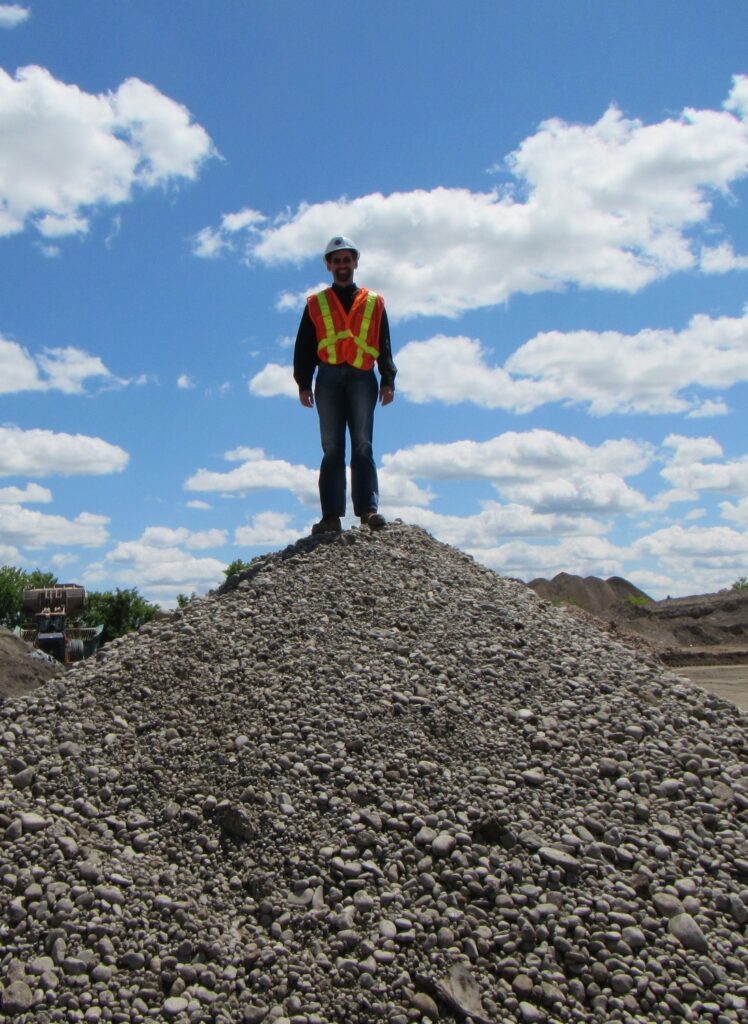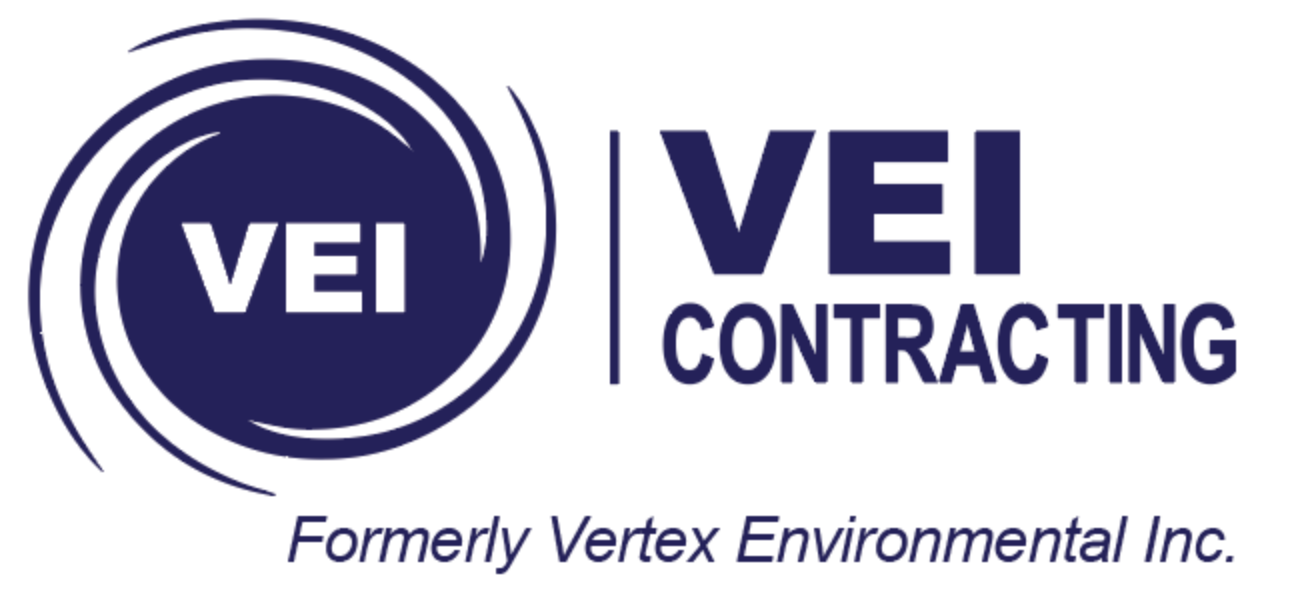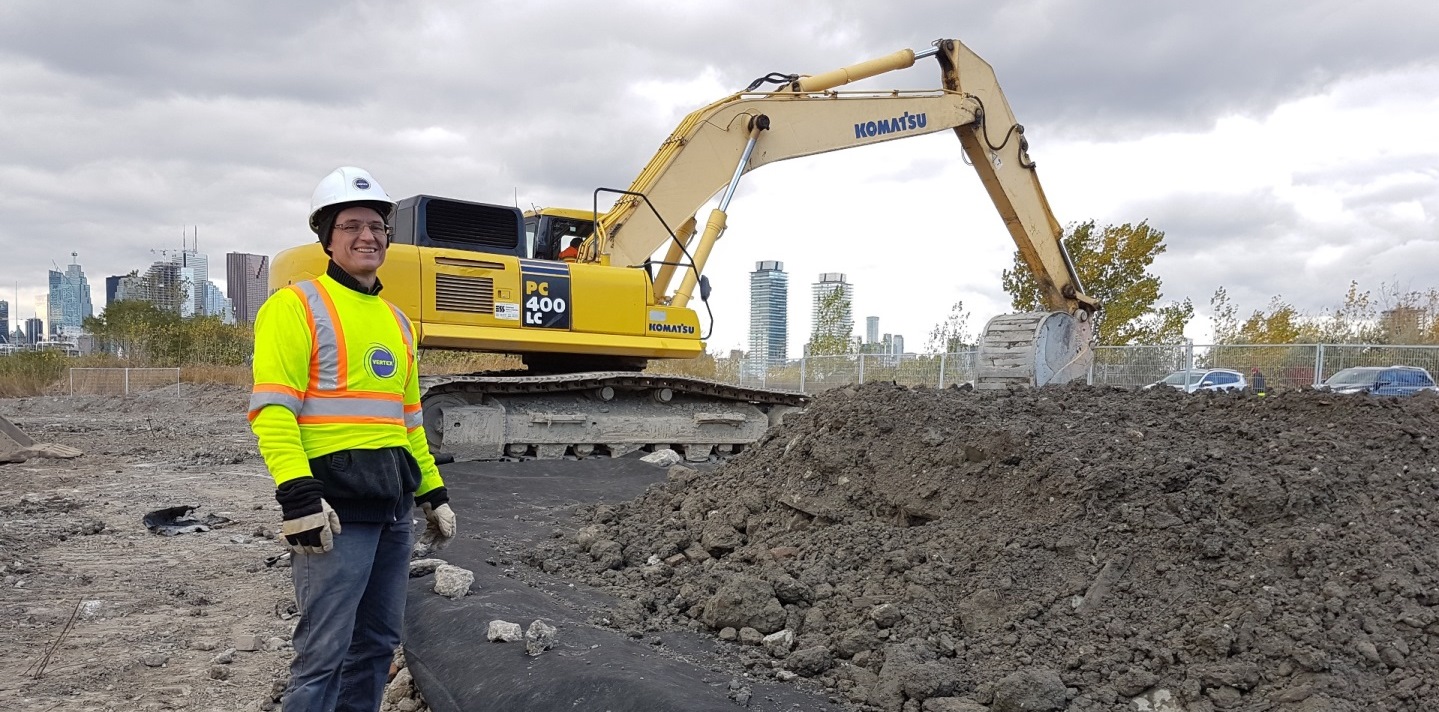Managing Soil – Changes are Coming!
Change is coming to the way we deal with soils!
This statement applies to Ontario, Canada, where the Ministry of the Environment, Conservation and Parks (MECP) recently announced regulatory changes relating to the new On-Site and Excess Soil Management Regulation.
MECP refers to excess soil as soil that has been dug up, typically during construction activities. It is estimated that 25 million cubic meters of excess soil is generated in Ontario every year.
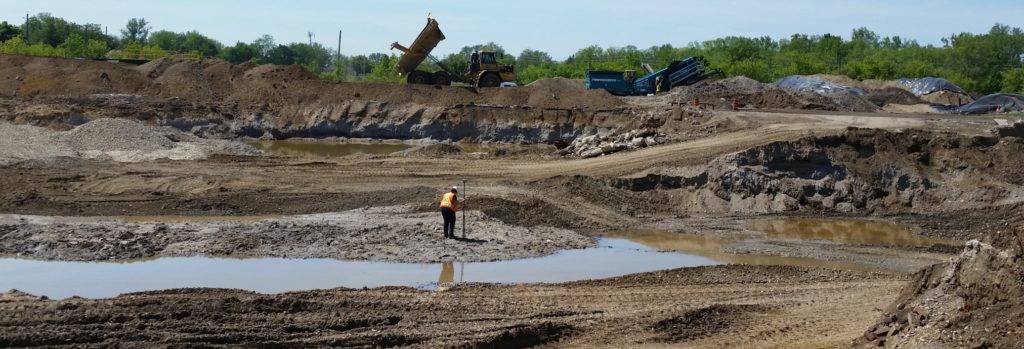
This is a tremendous amount of soil; in fact it would fill over 10,000 Olympic sized swimming pools. If placed end to end, these pools would stretch 500 km. In Ontario that is from London, straight through Toronto and ending in Ottawa. Every year. 500 km of Olympic-sized swimming pools. Any changes affecting how we deal with this much soil is going to be significant!
 This newsletter reviews the basics of the new Excess Soils regulation in Ontario and looks at potential beneficial on-site soil remediation and reuse options.
This newsletter reviews the basics of the new Excess Soils regulation in Ontario and looks at potential beneficial on-site soil remediation and reuse options.
If you are interested in hearing the MECP talk about the new Excess Soils regulation, they are speaking at the SMART Remediation series on January 23, 2020 in Toronto and on February 6, 2020 in Ottawa.
Excess Soils Regulation Comments
Industry and government identified that the regulatory regime was problematic for contaminated site redevelopment. For example, there was uncertainty and limitations relating to on-site soil reuse and storage, in addition to complications relating to Records of Site Condition (RSCs) such as the potential for double sampling between Risk Assessments (RAs) and RSCs.
This newly announced Excess Soils regulation should create more certainty and flexibility for Brownfield redevelopment, reduce costs and promote more sustainable soil reuse. Currently excess and contaminated soils can be a major obstacle for property redevelopment with the fastest and easiest approach typically being excavation and off-site disposal. Movement of large volumes of soil is not only costly but it is not environmentally friendly and may not always be necessary.

In December 2019, MECP released the new regulation under the Environmental Protection Act, titled “On-Site and Excess Soil Management”. The MECP notes that key elements of the regulation include:
- Clear excess soil reuse rules and clarity around when excess soil is not a waste;
- Clarifies when excess soil can be reused;
- Replaces or simplifies waste-related approvals with regulatory rules for low-risk soil management activities; and
- Enhances soil reuse through improved reuse planning for larger (i.e., greater than 2000 cubic meters) and riskier sites (e.g. gas stations and industrial sites), including tracking, registration, an assessment of past uses, and if necessary, soil sampling and characterization.

These changes are being welcomed in Ontario, and it is anticipated that similar ideological changes to how we view soil as a resource and not as a waste are currently or soon will be occurring in other judications across Canada and beyond.
For timing, the new regulation in Ontario will be phased in over time. Here is a summary:
- As of now, Brownfields redevelopment will have reduced requirements when filing an RSC. This change affects contaminant delineation for Risk Assessment properties and also some RSC requirements for low risk developments.
- As of July 1, 2020, the new regulation clarifies requirements for the Reuse of Soil and management of excess soil, including standards for safe reuse, movement and disposal.
- As of January 1, 2022, some projects generating or receiving excess soil will be required to characterize the soil and determine concentrations of contaminants and identify appropriate reuse sites.
- As of January 1, 2025, disposing of clean soil at landfill sites will be restricted, unless the soil is needed for solid waste cover or other uses beneficial to the landfill.
Ministry Comments on Excess Soils
The Ontario MECP put together a document entitled “Management of Excess Soil – A Guide for Best Management Practices” that provides some clarity as to the government’s opinion on soils.
Within this document, it is clear the government would like to minimize soil movement and associated truck traffic, and in doing so promote more sustainable redevelopment. It is stated that:
- When soil does need to be excavated, the MECP encourages the reuse of the excavated soil at the site where it is excavated to limit the amount of excess soil that requires management off‑site.
In more detail, the MECP states that for on-site use, potential Management Options for Excavated Soil include:
- Direct reuse of the excavated soil at the excavation site; and
- Treating or processing excavated soil and reusing the soil at the excavation site, in accordance with the terms and conditions of an Environmental Compliance Approval (ECA), where required.
Treating Soil On-Site
It is becoming more common to complete on-site soil treatment projects using ECAs. If completed correctly, on-site soil treatment is not only sustainable but cost effective, especially since landfill tipping fees are avoided and backfilling costs are greatly reduced. Furthermore, this work is more sustainable as trucking soils to landfills and trucking soils from virgin soil quarries is minimized.
There are many ways that on-site soil treatment could be applied, such as:
- In-situ soil mixing, where amendments are mixed with soil below ground surface to promote the destruction of contaminants in soil and groundwater;
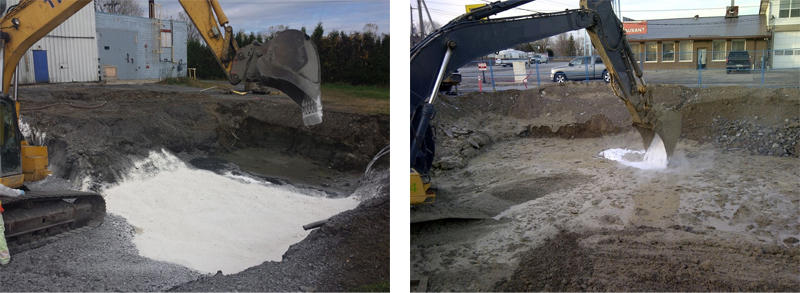
In-situ oxidant mixing with excavator
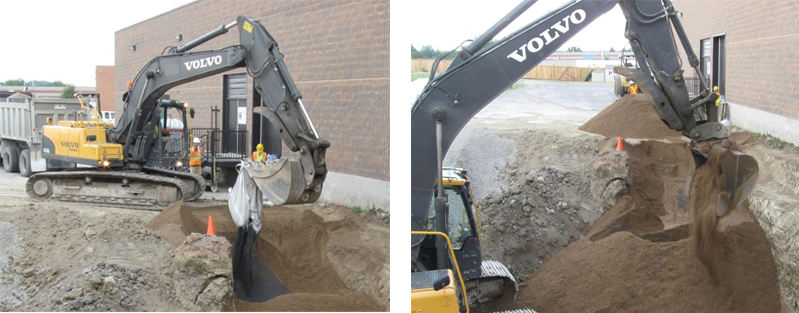
In-situ zero-valent iron (ZVI) mixing with excavator
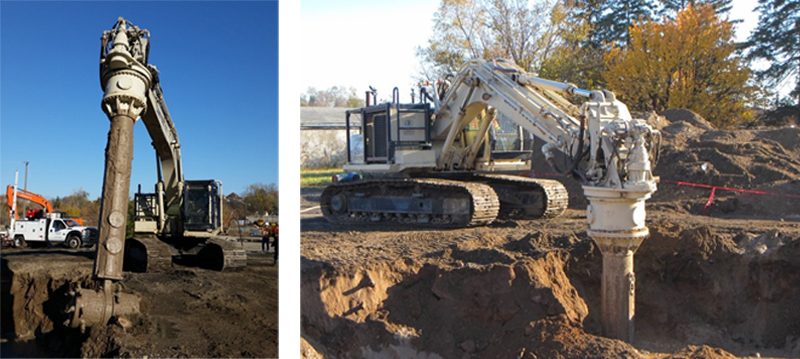
In-situ zero-valent iron (ZVI) mixing with the Lang Tool
- In-situ soil mixing, where amendments are mixed with soil at the ground surface, using tilling techniques;
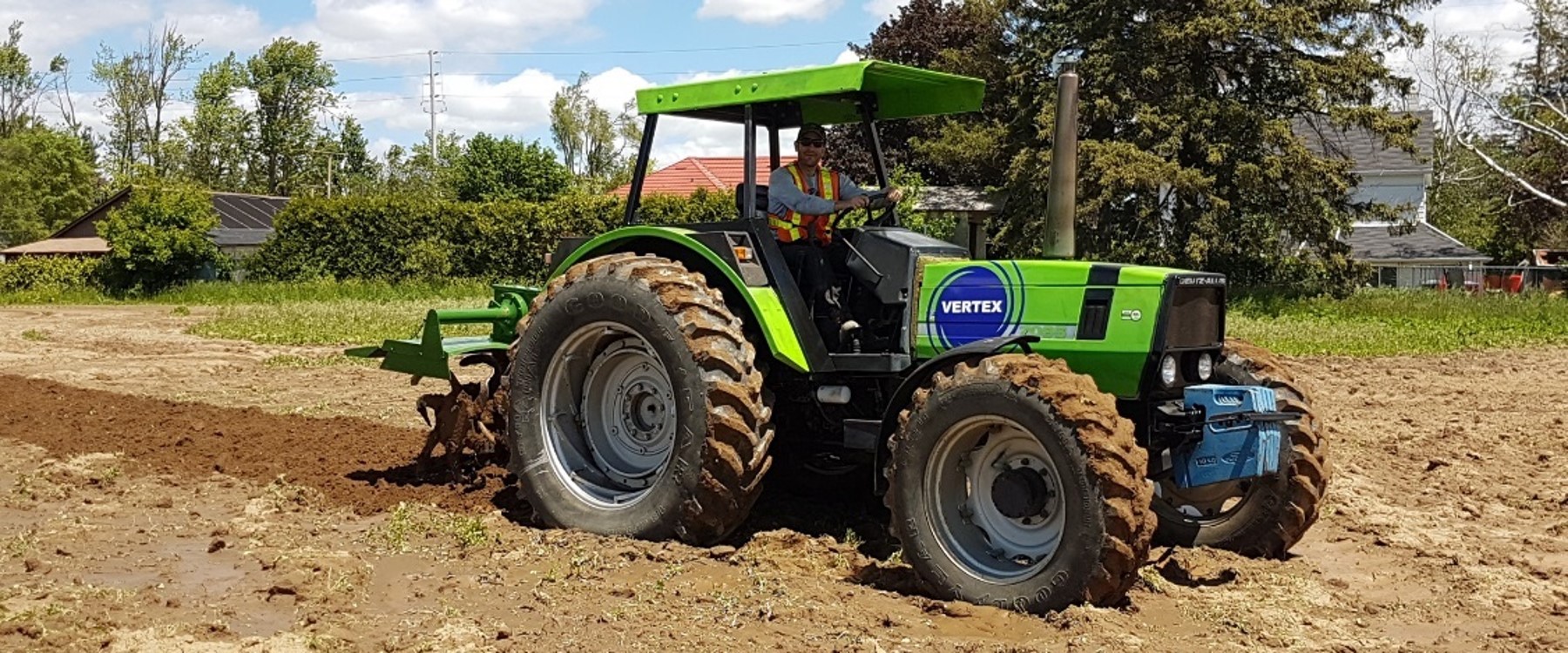
In-situ amendment mixing for remediation of pesticide-contaminated soil
- Enhancement of natural degradation of compounds in soil piles, such as windrows or biopiles. The most common application is to treat soils contaminated with petroleum hydrocarbon compounds (PHCs) by adding nutrients, moisture, oxygen and possible bacteria to the soil;
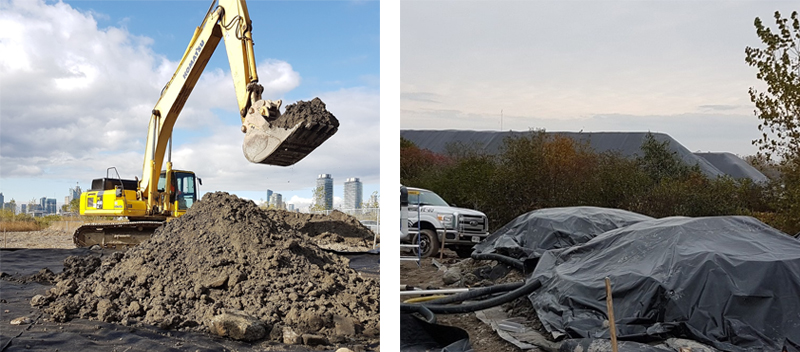
Loading ex-situ biopile and covered biopiles
- Destruction of compounds in soil piles by the addition of more active compounds, such as chemical oxidants like hydrogen peroxide. This approach could be completed before or alongside the natural biopiles mentioned above; and
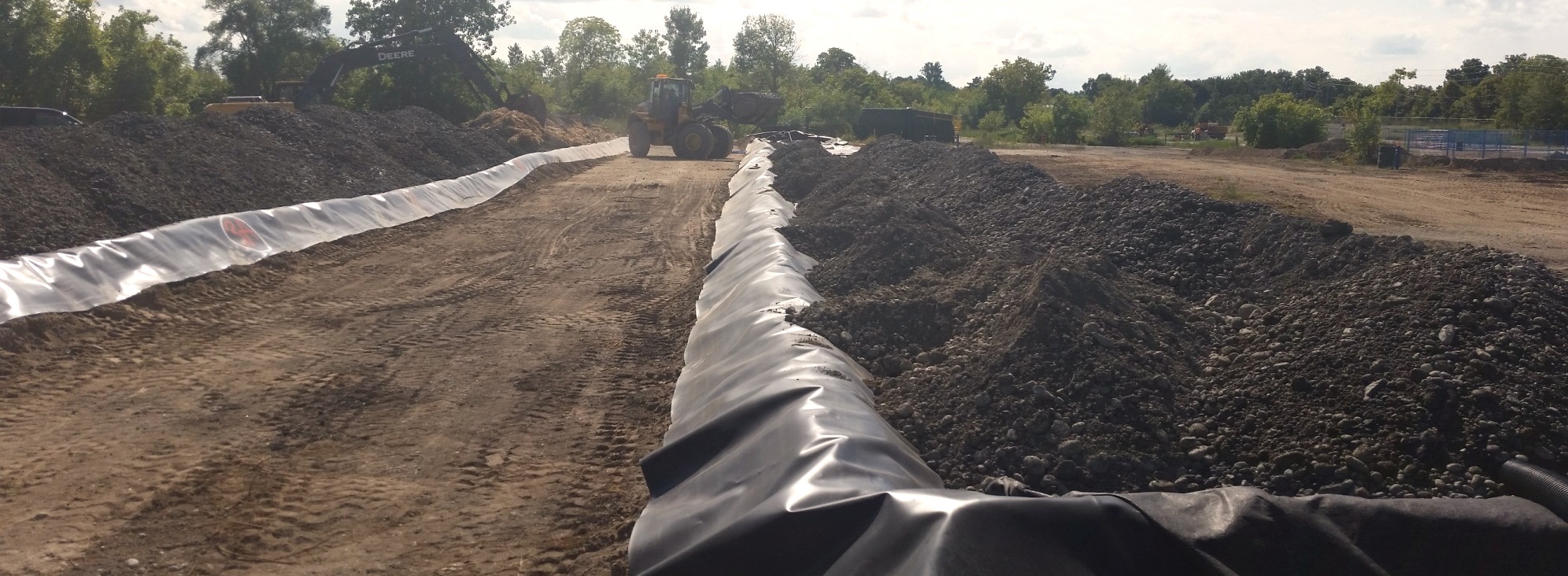
Preparing ex-situ biopiles for amendment addition
- Chemically binding or complexing leachate toxic heavy metals, such as lead or arsenic, in treatment cells to render leachate toxic hazardous soils non-hazardous.
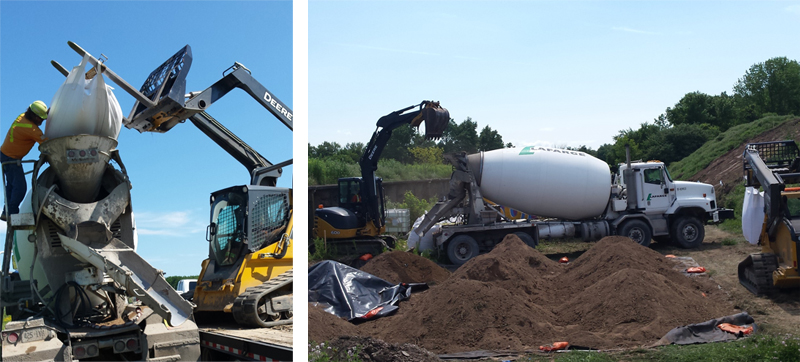
Mixing hazardous soil with amendments, and preparation of ex-situ treatment cells
All of this soil treatment work can be completed on Sites in Ontario under a mobile ECA. The process can be quick, typically being completed in 4 to 8 weeks. However, the best approach for biopiling using biological means (e.g. aerobic biodegradation) is to plan for work over to occur one season (3 months).
A mobile soil treatment system may include one or more of the following processes:
- Excavation of soil from the ground;
- Free draining groundwater from saturated soils;
- Sorting or segregating the soil as per a site-specific treatment design;
- Mixing in remedial amendments;
- Loading soils into treatment cells;
- Performance monitoring;
- Re-dosing or re-mixing of soils, as needed;
- Verification testing of soils; and
- Ultimately assessing the suitability of treated material for on-site re-use.
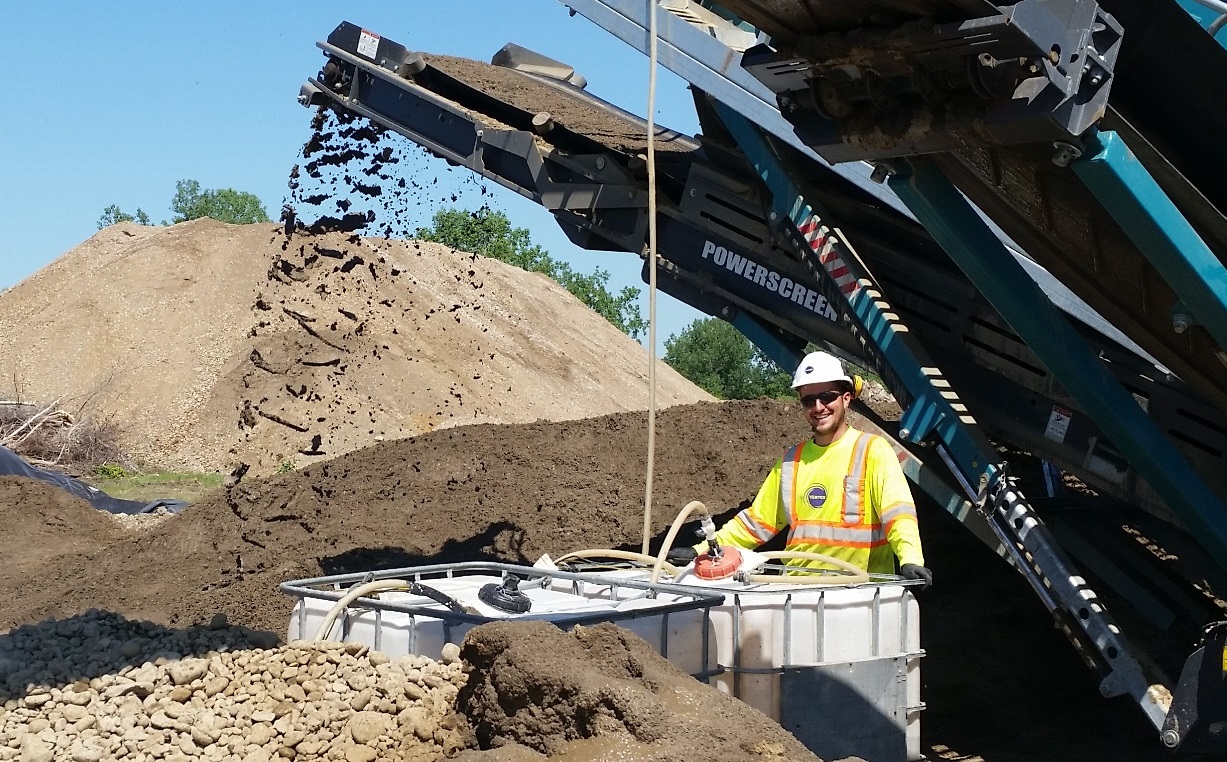
Soil screening and addition of nutrients
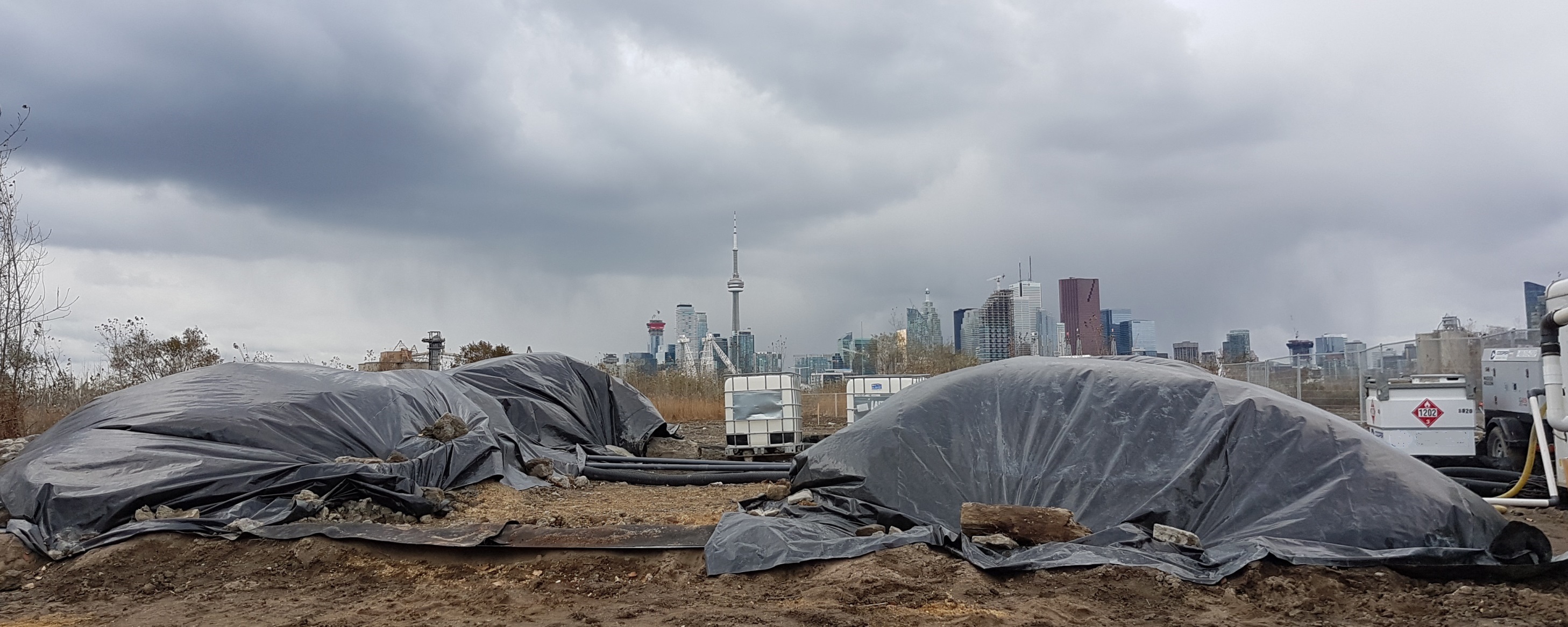
Covered ex-situ biopiles with active aeration

Covered ex-situ biopiles without active aeration
Because the types and concentrations of contaminants in soil are site-specific, as are the remedial objectives (e.g. generic, risk-based, etc.), treatment efficiencies will be different for each contaminant, concentration and each site. Someone with experience in on-site soil treatment should definitely be in charge of any on-site soil treatment processes.
Vertex has completed numerous on-site in-situ and ex-situ soil treatment programs and has the expertise to complete on-site soil remediation and reuse programs.
Closing
It appears the world is changing its mind-set from that of viewing contaminated soil as a waste, to viewing soil as a resource that should be used on-site (as much as possible). The new Excess Soils regulation in Ontario is a step towards useful on-site soil management.
We’re excited with these changes for many reasons, especially since the regulatory framework should reduce construction costs, while making it safer and easier to reuse excess soil locally. It should further promote the treatment of on-site soils and ultimately the beneficial reuse of those treated soils on-site.
We trust that the new Excess Soil regulation and any similar upcoming regulation across Canada and beyond will help to provide clear rules on managing and reusing excess soil, remove barriers to Brownfields redevelopment, and focus on minimizing off-site disposal of excess/contaminated soil.
If you need help with managing contaminated soils on-site, get in touch with Vertex. We want to help!
Let’s all get on top of excess soil!
